Active and aware community members want to follow along with local updates as they happen—and there’s no better way to follow the movements of public safety personnel than with a police scanner. Scanners come in all forms, from handheld to desktop, but they all have the same purpose: to keep you and your family safe and informed with regards to the activity of area emergency personnel.
However, police scanning is not only for staying updated on local emergencies and events. In recent years the pastime of listening to public band radio has blossomed into a hobby with its own vibrant online community. Listeners follow emergency personnel frequencies in all situations, at home, while driving, or even while out and about. Listeners on scanners nationally and internationally can also key into private events like sports and conferences using public frequency radios. At the end of the day, listening to radio scanners is one of the only hobbies that’s both fascinating and could simultaneously save your life!
- Factors to Consider in a Police Scanner
- Top 10 Best Police Scanners 2025
- 1. Best Overall Police Scanner: Uniden BCD536HP HomePatrol
- 2. Easiest Police Scanner to Use: Uniden BC75XLT
- 3. Best Budget Police Scanner: Uniden Bearcat
- 4. Best Desktop Police Scanner: Uniden BC365CRS 500
- 5. Best Premium Police Scanner: Uniden SDS200
- 6. Most Affordable Trunking Police Scanner: Whistler WS1065
- 7. Whistler WS1040
- 8. Best Police Scanner for At-Home Use: Uniden HomePatrol-2
- 9. Best Entry-Level Police Scanner: Uniden BC355N
- 10. Uniden BearTracker Scanner
- Guide to Buying the Perfect Police Scanner
- Wrapping up
Factors to Consider in a Police Scanner
Handheld or Desktop?
There are two major design families for police scanner: desktop scanners for at-home use and handheld scanners for when you’re moving around. Desktop scanners are larger and plug into the wall; they typically have more features and better antennas. Portable scanners are handheld and look similar to a walkie talkie, but they have limited battery life and require recharging. If you want something to use while driving or traveling, a portable scanner is best. For home use and keeping your family updated during emergencies, pick up a desktop scanner.
Some scanners also have different mounting options, notably brackets for hanging the device on a wall or slots to insert a scanner in your car stereo. If the scanner has one of these unique mounting mechanisms, it will typically also have a flat bottom and installed speaker to function on any flat surface.
GPS Capability
Typically only available on handheld models, GPS-equipped police scanners can automatically tune into local frequencies as you physically move between different municipalities. Due to the fact that desktop scanners usually stay in the same place, devices meant for home use usually don’t have this feature.
Trunking Capability
Many governmental agencies that use two-way radio to communicate utilize a technology called trunking, where the radios rapidly switch between frequencies during broadcasts. By doing this unpredictably, they make it difficult to listen to transmissions.
If the organizations you listen to use trunking-equipped radios, you’ll have to buy a scanner that is able to listen to those same frequencies. To see if your local public safety personnel uses trunking technology, check radioreference.com for a curated list of all of the channels in your area.
Programming
Scanners are better than conventional radios because of their ability to cycle through, or ‘scan’ through different frequencies and stop when the unit picks up radio chatter or activity. A good police scanner has an accurate and simple-to-use scanning function that is easy to program. Programming allows you to identify exactly which frequencies you’d like to monitor, whether that be airport, police, or fire department chatter. Without easy programming functions, it will be difficult to listen to the frequencies most interesting or relevant to you.
Computer Connection
With small and difficult-to-read screens and buttons, a scanner’s full potential can only be unlocked when plugged into a personal computer. Higher-end models typically have proprietary software that allows users to customize and access information and data, although less advanced models lack this functionality entirely.
| Product | Form Factor | GPS Capability | Trunking Capability | Rating |
|---|---|---|---|---|
| Uniden BCD536HP HomePatrol | Desktop/Car Stereo | Yes | Yes | 5 |
| Uniden BC75XLT | Handheld | Yes | No | 4.5 |
| Uniden Bearcat | Handheld | No | No | 4.5 |
| Uniden BC365CRS 500 | Desktop | No | No | 4.5 |
| Uniden SDS200 | Desktop with stand | Yes | Yes | 4.5 |
| Whistler WS1065 | Desktop | No | Yes | 4 |
| Whistler WS1040 | Handheld | Yes | Yes | 4 |
| Uniden HomePatrol-2 | Desktop | Yes | Limited | 4 |
| Uniden BC355N | Desktop | No | No | 4 |
| Uniden BearTracker Scanner | Desktop/Car Stereo | Yes | Yes | 3.5 |
Top 10 Best Police Scanners 2025
1. Best Overall Police Scanner: Uniden BCD536HP HomePatrol

Editor’s Rating:
Technical Specs
- Form Factor: Desktop/Car Stereo
- GPS Capability: Yes
- Trunking Capability: Yes
With a full clock and great antenna sensitivity, this scanner is a middle-ground option, suitable for just about anyone looking for something capable to grow with them. If you need something simple for now, but you’re hoping to get in touch with more difficult-to-access frequencies later, this is a great option.
The unit is capable directly out of the box without any setup, but has plenty of features to explore. Because of its tiered levels of technical difficulty, the high-price unit has one of the best learning curves of all scanners on the market.
Containing technology that allows the scanner to connect to WiFi, the unit is also mobile compatible via an app called ‘Siren,’ designed by Uniden, which connects via an internet network and allows you to manipulate and control the radio scanner via your smartphone. Be aware that in recent years Uniden has begun to favor PC software over the phone app and thus the app now receives only limited and infrequent updates.
Some users report the screen’s LED backlight dimming over time, but as the unit is incredibly long-lasting, something has to fail first. The dimming doesn’t render the unit unusable, and even without a screen the unit would be functional via the phone software, the full suite of buttons, and the phone app. In fact, screens are practically a recent innovation with police scanners, so some dimming after years of use is practically a non-issue.
The unit can be equipped with an SD card, but that’s only necessary if you need the device to scan more advanced and less-used frequencies. Setup of this feature is technically challenging, but using the SD card is an option if you’re looking to unlock the device’s full potential.
It’s fully capable out of the box: just plug in the zip code. However, for the tinkerers, there’s a world of possibilities to be unlocked.
Programming
Out of the box, this unit offers programming at its simplest, accomplished simply by plugging in your zip code. Its WiFi capability means it can also be programmed with the mobile app or the scanner’s GPS function. You can also program frequencies by hand with the keypad, although that is a bit more difficult
Pros
- Capable out of the box, but can grow technically as your skills develop
- WiFi-equipped
- Compatible with Uniden’s proprietary ‘Siren’ phone app
- Can be set up with an SD card
Cons
- LED backlight dims over time
- App receives limited support
2. Easiest Police Scanner to Use: Uniden BC75XLT

Editor’s Rating:
Technical Specs
- Form Factor: Handheld
- GPS Capability: Yes
- Trunking Capability: No
While the Uniden BC75XLT is not set up for radio buffs, it is still a capable unit that will pick up all the channels needed to keep you and your family safe. With no trunking capability, it can only pick up simple analog signals used by only the smallest of police departments.
While police listening is limited, there’s still plenty of traffic on non-trunked airwaves: 32,000 available frequencies contain the majority of American radio traffic. Civil servants, firefighters and more public safety agencies still operate on bandwidths with non-trunked, analog frequencies.
The device itself is incredibly easy to use, and a separate GPS plug-in will allow you to unlock new frequencies while driving. This keeps you from having to program new frequencies or zip codes while on the highway.
The handheld unit is thoughtfully built. A rubber-coated antenna won’t break or bend and provides ample reception for the most used frequencies. Soft buttons and a numeric keypad make menu navigation and programming easy. Power comes via a USB port that allows the unit to connect to a computer using Uniden software, and the device is compatible with some aftermarket software as well.
Programming
The soft numeric keypad and GPS capability make programming during use relatively easy with the buttons, but the easiest way to bypass scrolling through menu after menu with your thumbs is hooking the unit up to a computer.
Pros
- Simple use and operation
- Good build quality with a rubberized antenna
- Soft buttons make the unit easy to navigate and program
- GPS compatibility
Cons
- No trunking capability
3. Best Budget Police Scanner: Uniden Bearcat
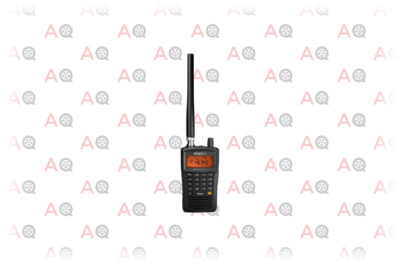
Editor’s Rating:
Technical Specs
- Form Factor: Handheld
- GPS Capability: No
- Trunking Capability: No
Uniden nabs another entry on our list with an inexpensive handheld police scanner that has much of the same functionality as other offerings at a lower price. For a $100-ish price tag, the scanner is remarkably capable, containing 30,000-plus monitorable frequencies and ten separate memory banks to isolate programming. Scrolling through about 500 channels per second, the scanner is not only loaded with memory, but works quickly as well.
For new listeners, programmed presets will have you monitoring frequencies in your area without so much as entering your zip code. Although, because the model doesn’t have trunking capability, make sure that your public safety personnel doesn’t employ the technology or you won’t be able to listen along.
To avoid programming or GPS-based setup, the radio uses a cool technology that detects the closest signals and monitors those, so out-of-the-box user input is practically unnecessary. If you program specific frequencies, though, you can use the backlit screen and numeric keypad, which are upgrades from more expensive scanners like the Uniden BC355N, which doesn’t have either.
The package feels a little cheap, and the rubber antenna and plastic case feel made-in-China. The soft buttons can be unresponsive and make the device difficult to program. Power comes via two AA batteries, and although they’re easy to find, they don’t last and you’ll need to invest in rechargeable batteries if you want to get any reasonable duration from a charge. Plenty of other scanners can be directly plugged into a wall.
Programming
Solving some of the woes of handheld programming is the scanner’s connection capability, as proximity-based programming means you can just turn on the scanner and be good to go. The unit can also be plugged into personal computers and programmed via Uniden’s free software. If you upgrade to rechargeable batteries, you can also use this time to juice-up—the batteries can conveniently be recharged via USB.
Pros
- USB charging
- Good memory bank
- Backlit screen
Cons
- No trunking capability
- Cheap plastic case
- Poor battery life
4. Best Desktop Police Scanner: Uniden BC365CRS 500

Editor’s Rating:
Technical Specs
- Form Factor: Desktop
- GPS Capability: No
- Trunking Capability: No
Taking a different approach to police scanning and the traditional radio form factor, the Uniden BC365CRS 500 is a more passive police scanner. It has a form factor similar to an alarm clock, and its clock feature means the concept is relatively similar to most radio alarm clocks. Set the timer, and the radio turns on at a specified time.
The similarities stop there: instead of scanning commercial radio channels, the device scans your selection of preset public safety channels. You can program up to 500 frequencies on the device, all via the numeric keypad and back LED screen.
Without trunking capability, this will function best in areas that don’t use trunking technology, although you’ll still be able to get some practical use in areas that have recently-upgraded systems by listening to non-trunked radio traffic.
For example, if you live in Chicago, you’ll be able to listen to the Office of Emergency Management, Department of Transportation, and the Fire Department. Unfortunately, you won’t be able to listen to organizations with sensitive information; departments like the Sheriff’s Office or the Police Department require more advanced technology.
All this is to say that, depending on your priorities, the Uniden BC365CRS 500 could mean the best bang for your buck among desktop units. It’s not the most technically advanced unit in the world, and it is beat out in terms of features even by user-friendly units like the Uniden HomePatrol-2. However, dollar for dollar, especially if you live in an area that uses non-trunked tech, this is the way to go when it comes to desktop scanners
Programming
Programming all happens with the numeric keypad and backlit LED screen. Some additional mode and preset dials make programming easier than most button-only units, but the best option is still something with software integration.
Pros
- Programming of up to 500 channels
- Inexpensive price
- Alarm clock feature
- Great bang for your buck
Cons
- Doesn’t have computer software programming support of more expensive models
- No trunking technology
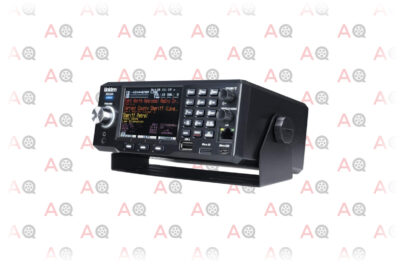
Editor’s Rating:
Technical Specs
- Form Factor: Desktop with stand
- GPS Capability: Yes
- Trunking Capability: Yes
The premium Uniden SDS200 is not the Rolls Royce of police radio scanners, it is the F16 fighter jet. And with a manufacturer suggested price tag of almost $700, it costs almost as much. As evidenced by this model, though, to get the best performance, sometimes you have to pay the price.
The SDS200 is a desktop rethinking of Uniden’s former industry-standard model, the SDS100. Its build quality is top-notch, and the included stand that comes with the scanner is made of solid metal designed to screw directly into a table or cabinet. It can also be used without this stand and sit flat on a table or counter.
The key innovation with this scanner is Uniden’s I/Q Receiver and Trunk Tracker X technologies. Along with luxury touches like a backlit keypad, machined metal volume dial, and multicolor LCD screen, what you’re really paying for with this device is access to the most technologically advanced radio systems. Governmental departments in recent years have switched to more advanced technologies, locking many out of listening to formerly publicly available transmissions. Uniden has spent millions of dollars in research and development to emulate and track these systems, allowing you to listen to almost every public frequency user in the US and Canada.
For passive listeners in many metropolitan areas, you’ll be able to pick up pretty much everything on a device like the entry-level Uniden BC355N, but for avid enthusiasts who are looking to maximize technological capability, listen to all bands of frequencies simultaneously, or play around with decoding strange bandwidths and simulcast frequencies, the SDS200 simply cannot be beaten.
For the most dedicated of radio heads, the SDS200 has NXDN, DMR, and ProVoice capability to listen to agencies that use those technologies, although these limited use cases require an additional paid license.
Programming
With a proprietary software made by Uniden for programming the unit’s many memory banks, setting up this scanner is a breeze. There are frequencies that this system can access that aren’t even listed publicly, a testament to Uniden’s incredible commitment to the production of the best products and systems on the scanner market.
Pros
- Proprietary technology allows countrywide listening
- Top-notch build quality
- Additional upgrade capabilities
- Color screen
Cons
- Astronomical price
6. Most Affordable Trunking Police Scanner: Whistler WS1065

Editor’s Rating:
Technical Specs
- Form Factor: Desktop
- GPS Capability: No
- Trunking Capability: Yes
Containing the latest trunking technology for a fraction of the price, Whistler produces a worthy adversary for the industry’s highest-priced manufacturers with the WS1065. As public safety continues to make the shift from stable analog frequencies to trunked, constantly changing digital frequencies, listeners need to have technology that keeps up.
In a lot of areas, conventional analog technology is still commonly utilized. In those areas, a cheaper unit like the Uniden BC75XLT is perfectly adequate for staying up to date. However, as big and mid-sized cities continue to use trunking technology and smaller cities begin to adapt to new systems, non-trunked technology is slowly falling out of use. The Whistler WS1065’s advantage is making trunking technology available at an accessible price, and while it doesn’t stay up-to-date with the very newest systems, it functions properly in a vast majority of the country.
The desktop unit has a solid but mainly plastic construction. Switches, dials, and buttons are all solidly built, but Whistler does have some warranty provisions in place just in case the unit breaks. A built-in speaker and a headphone jack permit multiple listening methods.
The Whistler W1065 gets the job done in most places, with a great bang for your buck, but for those who are trying to get access to every frequency possible, systems like the Uniden SDS200 simply have more advanced trunking capability. It’s probably prudent to check a database site like radioreference.com to make sure frequencies used by public authorities in your area can be accessed by this police scanner.
Programming
Programming is most easily done manually via the Whistler WS1065’s button dashboard, which is less than ideal. Although the keypad does have a full numeric keypad, it can still be pretty painful to program individual frequencies, let alone entire memory bank presets. The least painful part of programming is using the large, easy-to-read, backlit screen. There is a PC/IF jack that allows the device to connect to a computer, but you have to buy a separate cable to do so. Whistler doesn’t offer its own software.
Pros
- Inexpensive trunking technology gets the most bang for your buck
- Easy-to-read screen
- Solid construction and warranty
Cons
- Difficult programming
- Trunking technology isn’t comprehensive
7. Whistler WS1040
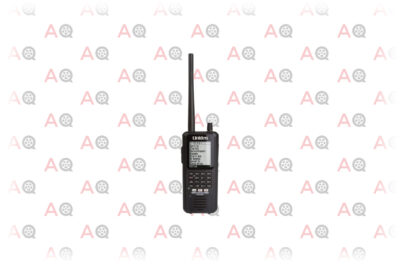
Editor’s Rating:
Technical Specs
- Form Factor: Handheld
- GPS Capability: Yes
- Trunking Capability: Yes
The Whistler WS1040 is only beat out by the Uniden HomePatrol-2 in terms of easy use and navigation. With a screen that rivals that of smartphones in both size and readability, this unit is targeted at buyers looking for a reliable user-friendly unit and are willing to pay a high price. With high price comes high-tech, and the Whistler WS1040 offers a trunking capability similar to the Uniden SDS200.
The handheld unit stands up by itself, so it’s possible to set it out on a kitchen counter for casual listening without issue. Should an emergency situation come up, its small size allows it to be picked up in a second and become instantly mobile.
Whistler is Uniden’s biggest competitor for the top tier of police scanning units, and they have a response to every single model in Uniden’s lineup. This model, on the other hand, is unique and doesn’t really have a comparable Uniden version. It treads a unique line between home friendly and technically capable, simple to use but also incredibly wide in terms of accessible frequencies and programmability.
Programming
Programming is similar to the desktop or wall-mounted Uniden HomePatrol-2. Just key in your zip code and the device will automatically populate its memory banks with segmented frequencies based on departments depending on where you’re located. Banks are extensive, and even the agencies using the most advanced trunking technologies can be picked up.
Pros
- Easily programmable by GPS or Zip Code
- Extensive memory banks
- Simple to use
- Highest level of trunking technology
Cons
- Quite expensive
8. Best Police Scanner for At-Home Use: Uniden HomePatrol-2
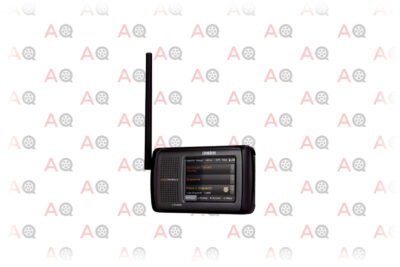
Editor’s Rating:
Technical Specs
- Form Factor: Desktop
- GPS Capability: Yes
- Trunking Capability: Limited
While most scanners daunt with complex programming, alphanumeric keypads, and loads of difficult technologies to decipher, the Uniden HomePatrol-2 is meant for a buyer looking to stay updated with the news, but not the tech. The admittedly expensive unit is almost like using a simple smartphone or a home security system, as the touchscreen-equipped unit is incredibly easy to use.
This unit is based on a desktop setup, but includes hardware that permits it to screw onto a wall for simplicity’s sake. The color display is bright and easy to read, the touchscreen is responsive. The software itself on the screen itself is simple, using a series of stacked and well-organized menus to manage the radio scanner. Presets are easily accessible, and the speaker is loud and high quality, nice for casual listening while performing household tasks.
The trunking feature allows the system to tap into most networks but it is not as complete as more expensive setups like the Uniden SDS200. It’s still quite comprehensive, though, and in almost every area of the country you’ll be able to pick up most public safety agencies. Police, hospitals, fire departments, and local emergency response personnel are all fair game, but some of the more intricate niche frequencies for aircraft or private use aren’t available.
For scanner listeners mostly interested in buying something for home use to stay up-to-date during area emergencies, the Uniden HomePatrol-2 is a perfect pick.
Programming
Programming is incredibly simple for the average user, just enter your zip code and you’ll be automatically reading the frequencies of local authorities. You can also connect a GPS receiver, but given that this is meant for home use, it’s largely unnecessary. While it can be connected to a computer to interact with Uniden’s software, most programming functions (everything from presetting channels to creating scanning banks) are relatively simple to accomplish just using the touchscreen.
Pros
- Just plug in your zip code to start scanning
- Sensitive touch screen makes programming easy
- Color screen is easy to read
- Includes hardware to mount the unit on walls
Cons
- No access to niche frequencies
- Premium price tag
9. Best Entry-Level Police Scanner: Uniden BC355N
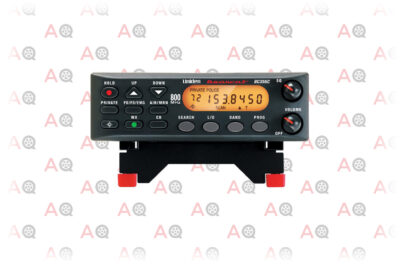
Editor’s Rating:
Technical Specs
- Form Factor: Desktop
- GPS Capability: No
- Trunking Capability: No
Using similar technology to its superstar big brother, the Uniden SDS200, the Uniden BC355N is a desktop unit that is simple to use for listeners new to scanning technology. At less than $100, it’s one of the cheapest police scanners on the market.
Uniden’s simple platform comes encased in an inexpensive but sturdy plastic case. The unit itself is quite small, about palm-sized, but the speaker is big enough to hear clearly. The buttons are clearly labeled and give good tactile feedback; the screen is bright and easy to read, although it lacks the color and LCD capability of other options.
The key feature that this system lacks is its inability to listen to trunked radio systems. A large percentage of governmental departments using radios to communicate use trunking technology to prevent casual listeners from listening in. To do this, they use radios that hop frequencies to make listening difficult. This scanner lacks that capability, and thus won’t pick up a lot of radio traffic in areas with trunked systems. Check what technologies your local authorities use to prevent disappointment down the line.
Programming
The Uniden BC355N uses a technology that scans about 100 frequencies per minute, with a memory bank of about 300 frequencies. Programming can be a little bit difficult due to the device’s limited keypad, so have patience and read the owner’s manual in case you run into difficulties. This device doesn’t connect to the computer, so all programming has to be done manually with the buttons on the receiver.
Pros
- Inexpensive
- Good for entry-level users
- Bright screen
Cons
- No trunking capability
- Programming is difficult
10. Uniden BearTracker Scanner
![]()
Editor’s Rating:
Technical Specs
- Form Factor: Desktop/Car Stereo
- GPS Capability: Yes
- Trunking Capability: Yes
While at first glance the Uniden BearTracker appears like a cheaper alternative to the twice-as-expensive Uniden SDS200, a look at the programming method behind this scanner quickly reveals the flaws in this piece of equipment.
Namely, ease of use. With no included instruction manual and an extensive, technical programming process, only radio buffs will get value out of this system—the most frequent complaint on this item is that new users physically can’t get the radio even scan frequencies.
For the devotees, though, this device represents a different story. It’s actually a completely fully-featured unit. Sure, it takes hours of Youtube videos to set up (and maybe an advanced degree), but in the same way that the Uniden HomePatrol-2 isn’t useful for the experts, this one is.
Complexity is obviously difficult to manage, but it’s also remarkably capable. 9000 available channels, location-based scanning, and reprogrammed public safety notifications all are features not typically found on sub-$500 units. This model permits radio memory banks that can be set up to read different frequencies, departments, and municipalities, all for under $200.
The scanner’s physical format fits directly into your car’s stereo slot, but it can also be used as a desktop set as it has a built-in speaker. Solid construction and plastic buttons are a testament to Uniden’s build quality, backed up by a 12-month manufacturer warranty.
Programming
Although there is an option to connect your personal computer directly to the scanning unit, it barely helps. Frequencies are inaccessible except with intricate programming, accessible only behind layers and layers of menus. Trunking ability exists, but it’s the same way—it can only be found after hours messing with strangely organized menus. Once you’re familiar, though, you’re locked in, and this is a unit that can be rewarding for buffs at an inexpensive price.
Pros
- Inexpensive for a model with full trunking capability
- Compatible with car stereo mounts
- Radio buffs can unlock full capability for an inexpensive price
Cons
- Programming requires advanced skill
- Hard to set up the radio to scan proper frequencies
Guide to Buying the Perfect Police Scanner
Police scanners range from simple models meant for at-home emergency monitoring like the Uniden HomePatrol-2 all the way up to complicated and enthusiast-oriented models like Uniden SDS200.
When shopping, it is important to identify your priorities. Take a serious look at why you’re looking to buy the unit. Unlike other products, higher prices don’t necessarily yield a superior product. What they will get you is a more complex police scanner. Key when shopping is to examine what agencies or services (police, fire, public emergency, aircraft, or others) you’d like to listen to, and then eliminate all of the options that can’t access the frequencies you’re looking for.
Police Scanner 101
Most public authorities use radios to communicate—police officers talk to each other, 911 operators talk to fire departments, EMTs talk to dispatchers, almost everyone from a government agency uses a radio to communicate. Most of these radio frequencies are not encrypted; they’re available for use by almost anyone. This is where a police scanner comes in: the object is to pick up those transmissions and listen in on local happenings.
A police scanner is not just a radio to tune into a specific public channel, it’s a scanner. The key difference is that it has is the ability to cycle through various radio frequencies and stop when there is activity. When that activity is done, (a conversation between a police officer and a 911 operator, for example) the scanner will resume cycling through frequencies until it picks up on more radio activity.
There are thousands of channels across the country, most of them relatively active, and you can’t listen to them all. When you purchase your scanner, you’ll have to decide what you’re looking to listen to. Are you looking to be aware of emergencies or are you listening to airport or racetrack chatter for fun? You can program your interests or needs into your scanner.
To find out which frequencies your local authorities operate on, head to radioreference.com for a comprehensive list of channels and their descriptions. Some scanner manufacturers will have that information contained in their proprietary computer software, which you can use to program your radio, or in booklets that they’ll include with their scanners.
After you’re set up, just sit back and listen, whether that’s for fun or for safety. You can continue to listen to new channels and play with functionalities as you learn more about your unit.
What Can I Use My Scanner For?
Police
Police scanners, as evidenced by their name, are most commonly used to monitor police activity. Police officers are the most active and versatile of all emergency personnel, so by listening to police chatter, you’ll be able to catch pretty much everything interesting happening in your area.
Fire Department
Fire department channels are great frequencies to listen to if you’re looking to monitor emergency situations. While firefighters and fire dispatchers aren’t typically as active as police officers, they do happen to be most on-the-go in big events like natural disasters, fires, and civil unrest. Typically, if there’s an event you need to be worried about, there will be chatter about it on frequencies reserved for fire departments.
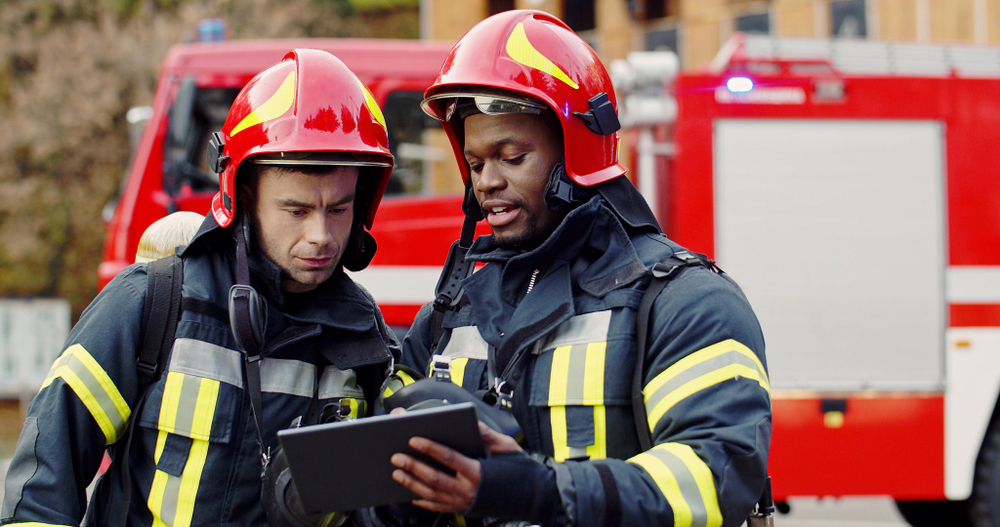
Air Traffic
For plane spotters and enthusiasts, monitoring air traffic controllers is another way to further engage with the hobby. While you’ll have to be relatively close to an airport to listen in, there’s a wealth of interesting information, protocol, and even inside jokes to catch up on. Air Traffic is best on a scanner but now there are online feeds that service major airports.
Auto Racing
While auto-racing is in a separate category from other types of public-band radio access, motorsports enthusiasts across the world use it to get a unique picture of race day. Each team is assigned a different radio frequency, and they use it to communicate with their drivers, race officials, and within their team. Even if you’re not a huge racing fan, listening in can be fascinating.
Adding GPS Capability
Radio towers are stationary, so if you take off driving with your scanner keyed in to the same frequencies as at home, you’ll quickly lose reception. While it’s possible to plan your trip in advance and program in the frequencies on your route or pull over and update periodically, the simplest and most efficient way to keep up-to-date is by hooking up your radio unit to a GPS.
Not all police scanners have GPS functionality, and even fewer have actual built-in GPS. For those with the optional functionality, you can buy a GPS device like the GlobalSat BR which plugs into your transmitter and, as if by magic, will automatically listen to the proper channels.
Improving Reception
One of the biggest issues users have with police scanners is getting reliable reception. It’s incredibly frustrating and dangerous to try to get up-to-date emergency information and be foiled by your own equipment.
There are two products in particular you can buy if you’re having trouble getting a signal at home. The first is an external antenna. These antennas attach to your roof or some outdoor point and feed into your scanner at home. Upgraded antennas are also available for handheld scanners to improve reception. You can also buy a signal amplifier, which is an auxiliary device that boosts the incoming radio signals.
Why Is a Physical Scanner Better Than an App or Website?
With the advent of police scanner technology that broadcasts directly online via websites or through downloadable phone apps, the number of people who listen to police scanner activity has skyrocketed.
While apps and websites are cheap and convenient, there are a number of advantages to having your own physical scanner at home or in your vehicle.
- Clarity is greatly diminished for any transmission that passes through an online transmitter. If you want to be able to hear police activity clearly, you’ll want a physical scanner.
- You’re no longer reliant on internet and cell coverage. Everything on a phone app or online comes through the internet, so if your coverage, internet, or power goes out, you’re pretty much hosed. A battery power scanner is dependable for getting you the vital information you need even when other services have failed.
- Once you have a scanner, you’ve made an investment you won’t have to keep paying. Apps typically charge monthly or use advertising to make money, while websites run advertising during the broadcast that can block you from getting access to the most current information.
- A scanner doesn’t have owner-imposed restrictions because you are the owner. Websites sometimes restrict active police channels for various reasons, but you’ll never lose out on the action with your own scanner.
- You typically can’t listen to more than one channel on monitoring apps and websites. Physical scanners are programmed specifically to be able to pick up multiple frequencies simultaneously.
- Scanner websites have to be updated with the most accurate frequencies, and when they aren’t updated or they’re missing a channel, you’re out of luck.
Online Communities
While monitoring scanner activity used to be a pretty solitary activity, online communities have sprung up on forums to share technologies, interesting events, and updates. Communities are welcoming and happy to teach newcomers the ropes. Radio is a passion for many and it’s something that’s rewarding, fascinating, and intellectually stimulating. The two main online communities are listed below:
- Radio Reference: Along with keeping an updated record of all public radio frequencies, the website runs a forum of passionate radio listeners who love to talk about the technical details.
- RDForum: Mostly for HAM radio heads, the community has a dedicated group of police scanner listeners that love to chat.
Legality
When listening to authorities it can feel exciting and even secretive—but is it legal to listen to these broadcasts? The answer is an unequivocal yes. Anything that you can hear through your radio is classified as public information, so get curious about it! There’s plenty of interesting and exciting things to be found.
It is enshrined in federal law to be able to listen to these types of communications. In fact, while other radio communication is encrypted, most authorities continue to leave transmissions unencrypted specifically so that they can be listened to by the public. Law enforcement groups sometimes use ‘trunked’ radio signals that periodically change frequencies to discourage casual listeners, but most scanners on the market have the same technology and as such will be able to key into conversations as they hop across the different radio bandwidths.
Wrapping up
Looking for a police scanner is a big deal: it’s an expensive purchase, and as with any personal safety device, it’s something that can potentially affect your life in a big way. Remember, at the end of the day, any police scanner is better than nothing, and as long as you have a device that can listen to the most active frequencies, for you and your household everything else is just icing on the cake. You’ve already made the best decision: the one to buy a piece of equipment that can protect you and your family during emergency situations.


